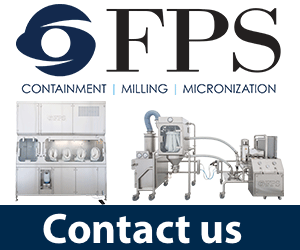Containment strategy: a risk-based approach
Huw Thomas, principal pharmaceutical engineer with Foster Wheeler, outlines a practical and systematic approach to containment selection
Articles on containment typically start by identifying the drivers behind an increasing focus on containment for pharmaceutical manufacturing. These include the fact that active pharmaceutical ingredients (APIs) are becoming more targeted and hence of higher potency, and internal and external environmental, health and safety (EHS) pressures are pushing for engineered controls, rather than relying on personal protective equipment.
At this point, a bewildering array of containment devices and jargon is presented, along with claims such as “test results with lactose using SMEPAC show average >1mg/m3 for an eight-hour TWA performance”.
Foster Wheeler’s approach takes a step back from the containment device selection and carries out a four-step approach as follows:
1. Identify the exposure interfaces;
2. Assess the exposure risk from each interface;
3. Decide on the containment approach for each exposure interface, and
4. Decide on the options for containment solution for each containment interface.
In step 1 the exposure interfaces can be process-operator and also process-environment and, for a given interface, exposure can occur at different times, for example during:
- Routine production;
- Routine non-production — e.g. cleaning, plant changeover;
- Non-routine operations — e.g. operator intervention into contaminated plant, unplanned “breakdown” maintenance, and
- Fault conditions — e.g. equipment seal failure, assembly errors.
A similar approach can also be used for aseptic manufacturing processes to identify the interfaces and operations where there is a product sterility assurance risk.
In step 2, a risk assessment is carried out for each operation and typically takes into account a number of factors that have been shown to influence the exposure potential from an operation.
At a simple level, each factor can be qualified to assist in deciding which containment approach to choose. We have applied numerical ranges to each factor in the diagram (left) and used this semi-quantitative factor-based risk assessment to assess the exposure risk of a wide range of operations in lab-, pilot- and full-scale manufacturing plants. For complex operations, this method has been found to give the following benefits:
- Widely different operations can be compared, while identifying which operation needs addressing first and the scale of containment upgrade required;
- The rationale behind the decision-making is transparent and can be challenged, and
- The decision-making process is fully traceable from the initial process description through to the containment system design. This avoids “opinion engineering” and allows the basis and rationale behind a design decision to be challenged rather than endless and often fruitless discussion on the design itself.
With regard to step 3, there are a number of typical containment approaches:
Approach A: Simple local exhaust ventilation (LEV)
Approach B: Managed airflow in a downflow booth
Approach C: Barrier containment such as glovebox or split butterfly valve
Approach D: Multiple barrier approach for very high-risk operations
For each operation, an approach is selected based on the proven ability for that approach to achieve the required levels of containment.
Step 4 involves selecting the best containment solution. There is, usually, more than one equipment option that will meet the required containment approach and these options are then assessed against non-containment requirements, such as cost, ergonomics, cleanability and flexibility to determine the most suitable.
This structured, risk-based approach to containment design has been successfully developed and used by Foster Wheeler over a wide range of projects. These include reviewing plants during the design stage, reviewing and rapid upgrading of containment in existing plants to meet urgent operating needs, and developing future containment approaches for existing plants to achieve significant reductions in operator exposure.




